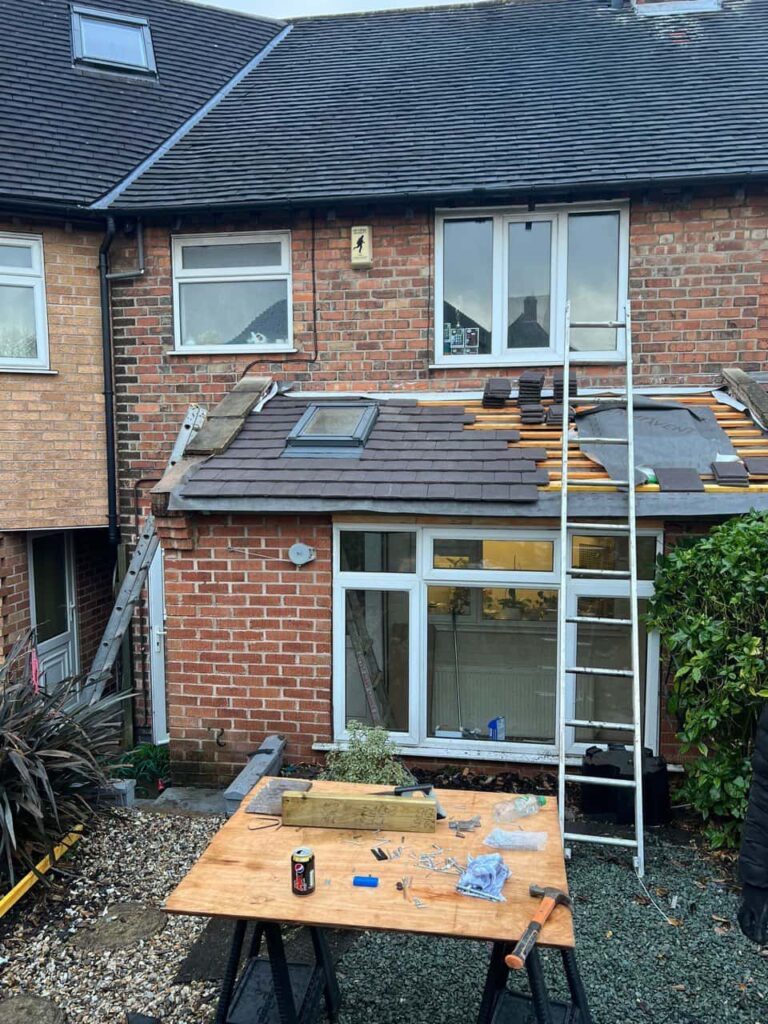Introduction
In the age of online tutorials and weekend projects, many homeowners feel tempted to take on roof repairs themselves. While a bit of DIY enthusiasm is commendable, roofing is not an area where shortcuts or guesswork should be entertained. A minor error on a roof can quickly evolve into major damage, often costing far more to fix than a professional repair would have in the first place.
At Southsea Roofing Repairs, we’re frequently called in to rectify DIY roofing attempts that have gone awry. Based in Southsea, Hampshire, we’ve seen everything from mismatched tiles to dangerous structural oversights. In this article, we’ll explore five of the most common mistakes people make when attempting DIY roof repairs — and why trusting experienced professionals is the safer, more effective choice.
1. Using the Wrong Materials
Not All Roofing Materials Are Created Equal
One of the most frequent DIY errors is selecting the wrong materials for the job. Whether it’s replacing a cracked tile with one of a different material, or using general-purpose sealants instead of roofing-grade products, mismatches can lead to fast deterioration.
Common missteps include:
- Using incompatible replacement tiles
- Applying standard silicone instead of bitumen or roofing sealants
- Attempting patch repairs with unsuitable adhesives
- Failing to match tile profiles or underlay types
Choosing the right materials is essential for maintaining roof integrity and avoiding water ingress. Southsea Roofing Repairs always ensures materials are correctly matched to your roof’s age, style, and weather exposure.
2. Poor Flashing Installation
Overlooking the Importance of Leadwork
Flashing is one of the most vital components of any roof. Installed around chimneys, valleys, skylights, and dormers, it prevents water from entering the structure. DIYers often underestimate how precise flashing needs to be — both in placement and sealing.
Incorrectly installed flashing can allow water to seep behind tiles, often without immediate visible signs. The result? Damp patches, wood rot, and sometimes costly internal damage.
Common flashing mistakes include:
- Failing to overlap correctly
- Using adhesive rather than mechanical fixings
- Not sealing junctions properly
- Reusing old flashing that has already degraded
At Southsea Roofing Repairs, we understand that correct leadwork and flashing detail is essential for any lasting roof repair.
3. Ignoring Underlayment and Ventilation
A Roof’s Hidden Layers Matter
DIY roofers often focus on what’s visible — tiles or shingles — but overlook what’s underneath. Roofing underlay (also called felt or membrane) acts as a critical moisture barrier. If this layer is damaged or incorrectly fitted, water can reach the rafters and internal ceiling.
Ventilation is another area easily overlooked. Proper airflow prevents condensation build-up, especially in the loft space. Blocking roof vents or covering breathable membranes with non-permeable materials is a common mistake that leads to mould and decay.
Signs of poor DIY ventilation include:
- A musty smell in the loft
- Mould patches on roof timbers
- Trapped moisture or dripping from rafters in winter
Professionally installed roofing from Southsea Roofing Repairs always ensures both waterproofing and airflow are considered — two elements that work together to extend your roof’s lifespan.
4. Unsafe Working Practices
Risking Personal Injury for a Short-Term Fix
Roofing work, especially on pitched or high structures, is inherently dangerous. Lack of appropriate safety gear, ladders positioned incorrectly, or poor weather conditions make DIY roof repairs risky business.
Some of the most unsafe DIY practices we’ve encountered include:
- Walking on fragile slate or tile roofs without protection
- Using household ladders not suited for height or angle
- Working during wind or rain
- Attempting complex repairs alone
Safety isn’t optional. Professional roofing teams like Southsea Roofing Repairs are trained, insured, and equipped to work at height without putting lives at risk. It’s simply not worth the gamble.
5. Temporary Fixes That Fail Long-Term
Quick Patches Often Create Bigger Problems
It’s tempting to tape over a leak or slap on a bit of sealant and hope for the best — especially during a storm or when time is tight. But temporary fixes rarely hold up, especially on a surface as exposed as your roof.
Some short-term fixes that usually fail include:
- Duct tape over cracks or splits
- Using expanding foam around flashing
- Gluing tiles in place instead of proper fixing
- Laying plastic sheeting under tiles as a barrier
These ‘solutions’ may stop the problem briefly, but they rarely address the root cause and often make matters worse. Water can still get through, and hidden damage can spread.
At Southsea Roofing Repairs, we investigate the full extent of the issue and carry out repairs designed to last — not just survive the next rainfall.
Conclusion
DIY roof repairs might feel like a cost-saving measure, but they often result in complications that could have been avoided with expert help. From choosing the wrong materials to overlooking critical flashing or ventilation, these mistakes not only reduce the effectiveness of your roof but can compromise the safety and value of your property.
If you’re in Southsea or anywhere in Hampshire and your roof needs attention, trust the expertise of Southsea Roofing Repairs. We provide reliable, professional service designed to resolve issues properly the first time — saving you time, money, and potential stress in the future. Let your roof be a job for the professionals — and rest easy knowing it’s in capable hands.
Call us on: 023 8235 9773
Click here to find out more about Southsea Roofing Repairs
Click here to complete our contact form and see how we can help with your roofing needs.

